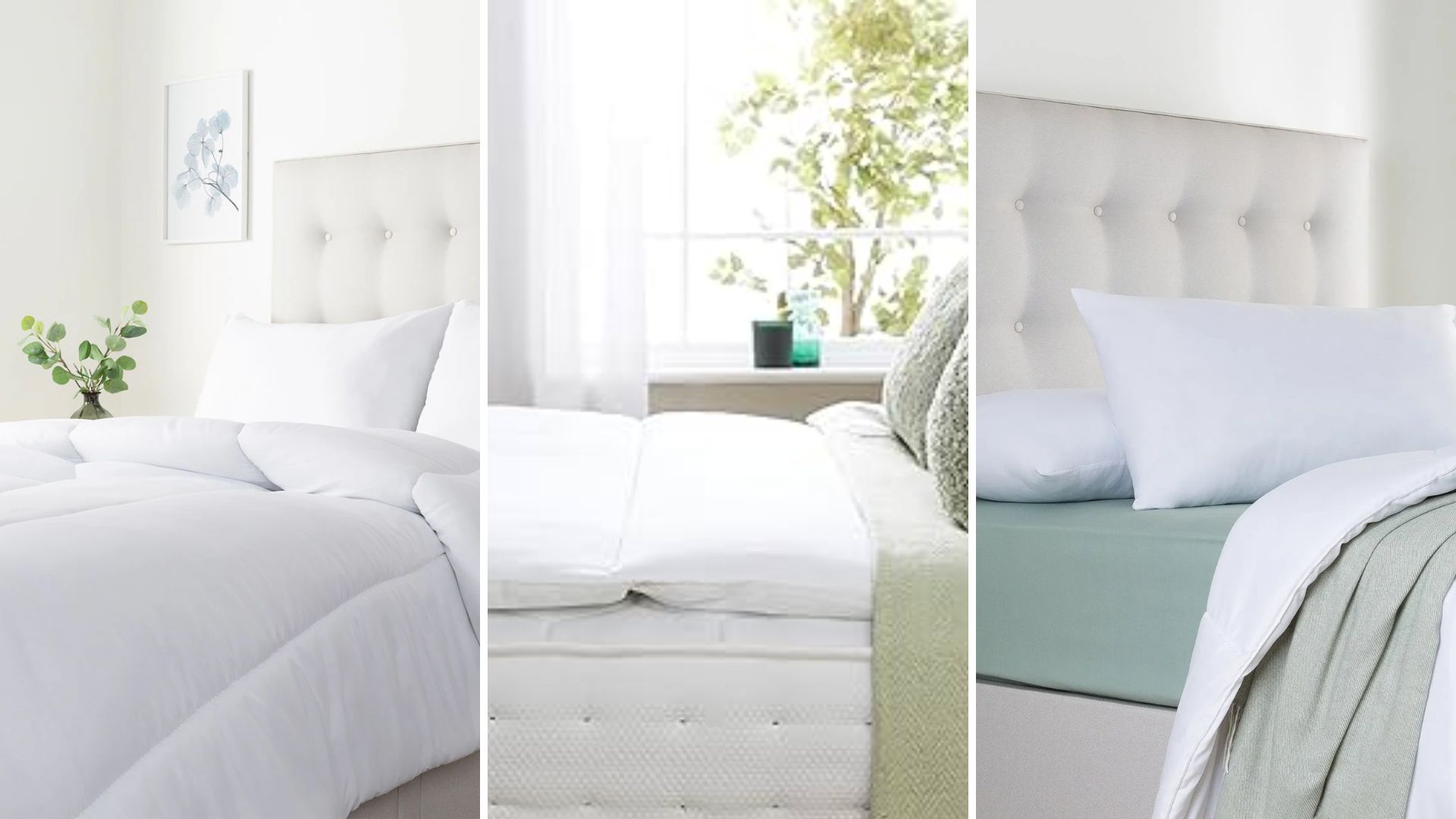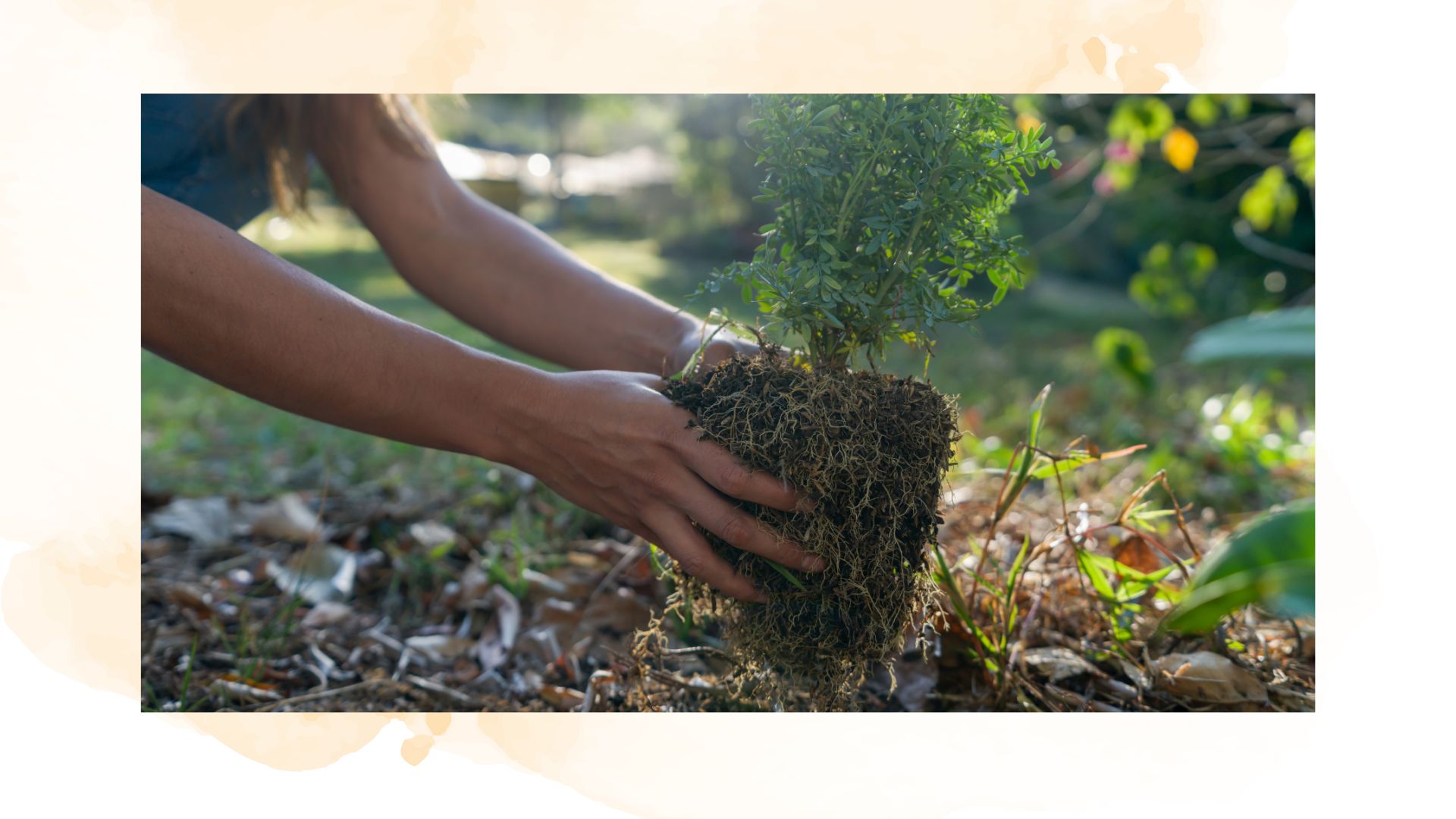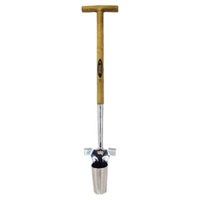How to plant tulips: An expert guide for foolproof spring blooms no matter the soil type
Now is the time to get planting your tulip bulbs and if you're looking for a little guidance our gardening experts are here to help


Although it seems like a simple enough task, planting tulip bulbs and getting it right requires a little bit more thought than other plants. So if you're a newbie or simply need a refresh, here's a foolproof expert-recommended planting guide for showstopping tulips.
From all the plants you can grow from bulbs and tubers, tulips are an obvious favourite among many gardeners. They're an absolute jewel of the garden when in bloom and can be easily cut to bring into the home to enjoy in a bouquet.
You may already know what to do with tulips after flowering but often the method and timing of planting can be underestimated. So if you need a little help with mastering the art of tulip bulb planting you've come to the right place.
How to plant tulips: An expert guide
Whether you're looking for ways to transform your garden on a budget or simply want to breathe a little life back into your space with some patio container plants, tulips are a great choice as bulbs to plant for colourful spring flowers.
With their vast and varied groups, you can easily find a colour and shape to suit your garden and other plants. But before you choose your type, it's important to know how to properly plant them in pots or in the ground.

RRP: £38.95 | Flowers that look good enough to eat? Sign us up! These are a classic tulip mix from the Sarah Raven shop with a variety of purple and orange tulips that will liven up even the most dull garden corner.

RRP: £9.95 | If you're looking for some tulips with a bit more of a unique shape these ones from Sarah Raven are stunning. They have a sharper pointed petal shape as well as a pure white colouring which looks great in the sun and in a shady spot.

RRP: £9.98 | These are certainly a statement bulb with their dark purple and black colourings. Their foliage is just as mesmerising with its darker rich green that allows the irridescent-looking petals really pop.
1. Prepare your soil

You might not think so but knowing your garden's soil type is an extremely important step to achieving stunning blooms and successful plant growth. Most plants can find a way to thrive in any soil type but there might be some prep you need to depending on what yours is.
"Before planting in autumn, improve the soil by incorporating organic matter, such as leaf mould, rotted manure or compost. Tulips usually prefer a soil that is neutral to alkaline, and if your soil pH is below 6 you should use lime to increase the pH," explains Graham MCIhort, gardening expert at LBS Horticulture.
Sign up for the woman&home newsletter
Sign up to our free daily email for the latest royal and entertainment news, interesting opinion, expert advice on styling and beauty trends, and no-nonsense guides to the health and wellness questions you want answered.
Of course, it's not just your soil that matters, you'll also need to decide where you want your tulips to be. Whether that's in a terracotta pot or in the ground in a flower bed, there are a few things to consider.
Hannah Rowson, Assistant Garden Centre Manager at J. Parker's says, "Tulips like to be somewhere in full sun. Find a sunny spot in your garden and plant your Tulips there. They can also withstand partial shade, so a little bit of dappled shade won’t do any harm. Be careful of moderate or full shade, they require sun to flower at their best, so full sun is recommended.”

Graham has extensive knowledge in the horticultural and gardening industries, and prides himself on using this to help gardeners of all skills create their perfect outdoor space.

Assistant garden centre manager Hannah Rowson has been with bulb specialist J. Parker's for over eight years. RHS qualified, Hannah is a fountain of knowledge for all things gardening and horticulture, and has even had her garden designs displayed at the RHS Tatton Flower Show.
2. Dig a hole for the bulb

No matter what bulb you plant for a colour spring display, they'll need a certain amount of depth in the soil to successfully grow.
"The first step would be to dig a hole where you want to plant your bulbs, whether that be in a container, the ground or a raised bed. Tulips should be planted at about 3x the depth of the bulb, so the hole will usually be 13-20cm deep," advises Hannah.
You can use a trowel for this, some models will come with a ruler engraved onto the side, or for an easier and more exact depth you can use a bulb planter. This can be a great choice if you'd rather not risk hurting your back or knees bending over to dig.
These bulb planters are a lifesaver if you're finding it difficult to bend over or get up and down to plant your bulbs. It features depth markings and has a weatherproof hardwood handle so you don't need to worry about it rotting in your shed over winter.
3. Plant the bulb

If you're not trying out Monty Don's bulb lasagne trend then planting is a pretty simple step to the method. There are just a few conditions to keep in mind to ensure the flower finds its way to the topsoil when the time is right.
Hannah says, "Place your bulbs root-side down (and pointy end up) in the hole. The bulbs must be stood up for the stem and flowers to find their way out of the soil. It’s easy to tell which is the right way to plant your bulb but if it is hard to tell, a top tip is to plant bulbs on their side."
"The roots will naturally find their way down into the soil, and the stem will bend its way into an upward position and still look great when it flowers," she adds.
4. Cover the bulbs and protect them

Now the hard parts are all done, it's time to simply cover your bulb over with soil or compost and lightly firm it down to cover the hole. If you have a problem keeping squirrels out of your garden you may want to go a step further.
Hannah suggests using potting grit, chicken wire or cloche over the area where your bulbs are planted. She says, "These measures make sure your bulbs are not dug up (usually by squirrels), and to make sure that the early shoots in Spring are not eaten by any pests."
Cloche is also really helpful when protecting your plants from frost over winter, whilst your bulbs are protected by the soil you can also cover them in cloche too just to be safe.
What's the best month to plant tulip bulbs?
Should you not be sure when to plant spring bulbs and specifically tulips then it's a rather consistent timescale and one that has a little flexibility.
Jane Dobbs, lead gardener at Allan's Gardeners says, "November is the best time before the first frost, or December if you live in a mild climate. If you didn't plant your bulbs before Christmas, don't throw them out. Even bulbs planted in January can do well. Tulips are technically perennials, but they only bloom once a year due to breeding to get beautiful blooms."

Gardening is Jane's passion, having built and maintained stunning outdoor spaces for over a decade. Managing all the garden projects at Allan's Gardeners is her responsibility as lead gardener. A wide range of horticultural practices come into play in Jane's work, from landscape design to plant and lawn care.
FAQs
Can you leave tulip bulbs in the ground all year in the UK?
One of the advantages of planting tulip bulbs is that they can be left in the ground over winter to die back and regrow. However, there are some conditions to this and not every type of tulip plays by the same rules.
Jane says, "Tulip bulbs can be left in pots or the ground year-round in the UK, but there are some things to keep in mind. Since the UK's cooler climate offers ideal dormancy conditions, tulip bulbs usually survive the winter without issue. Remember that tulips prefer soil that drains well to prevent bulb rot. Gravel and sand can help drain heavy clay soils."
"Darwin and botanical tulips, however, are better suited for naturalising, meaning they will return reliably every spring when left in the ground year-round. Although winters are mild enough for tulip bulbs, a light layer of mulch can provide extra protection," she adds.
This is where the question of whether you should deadhead your tulips comes in and Monty Don says absolutely. Once the flowers have passed their best, use your secateurs to cut them back.

Pretty pink tulips grown in a patio pot
Do tulips come back every year?
Even if you like to keep up to date with the latest garden trends, having plants that will come back by their own accord each year is a great sustainable garden idea. Plus it requires less effort for a high reward.
Graham says, "Although tulips are technically perennial plants, certain varieties may often only flower for a single year, with many gardeners often planting new bulbs in each autumn for a guaranteed display."
"For tulips being grown in pots, it is best to plant fresh bulbs each year. However, for tulips left in the ground, you can increase the chances of them coming back by deadheading the plants after they have flowered," he adds.
Graham explains that deadheading will stop them from wasting energy on producing seeds, so make sure to cut back the foliage once it's turned yellow. That way the bulb will begin storing energy for next year's growth.
Once you've mastered the art of planting flowers, why not start vegetable gardening for beginners? There isn't anything more rewarding than working away in the garden to finally be met with some delicious fresh-as-can-be vegetables to take inside and enjoy with your friends and family.

Emily joined woman&home as a staff writer after finishing her MA in Magazine Journalism from City University in 2023. After writing various health and news content, she now specialises in lifestyle, covering unique cleaning hacks, gardening how-tos, and everything to help your houseplants thrive.
-
 Aldi's affordable bedding is actually made by my favourite sleep brand - it's got more than your duvet covered
Aldi's affordable bedding is actually made by my favourite sleep brand - it's got more than your duvet coveredAldi's Anti-Allergy Bedding has arrived in the middle aisle and it's more affordable than the best mattress toppers, duvets, and mattress protectors out there
By Laura Honey Published
-
 Unforgettable date ideas to make a great first impression or rekindle romance
Unforgettable date ideas to make a great first impression or rekindle romanceForget the same old first date formula - these unforgettable date ideas will leave them thinking about you long after you go home
By Natalie Denton Published
-
 Vegetables to plant in April: 8 crops to start now for a delicious harvest later in the year
Vegetables to plant in April: 8 crops to start now for a delicious harvest later in the yearDiscover which vegetables to plant in April, and top tips for growing success
By Holly Crossley Published
-
 How to plant freesia bulbs: easy steps for colourful summer blooms
How to plant freesia bulbs: easy steps for colourful summer bloomsIf you're looking to add some vivid colour and life to your garden, freesias are the perfect choice
By Emily Smith Published
-
 Gardening experts reveal how often you should water grass seed for a luscious lawn this summer
Gardening experts reveal how often you should water grass seed for a luscious lawn this summerWant your lawn to be looking its best by the time summer rolls around? You'll need to make sure you're watering it the perfect amount
By Emily Smith Published
-
 Lynsey Crombie reveals the surprising laundry mistake leaving your clothes smelling 'stale and nasty'
Lynsey Crombie reveals the surprising laundry mistake leaving your clothes smelling 'stale and nasty'Do your clothes smell unpleasant even after you've washed them? It could be your fabric conditioner
By Emily Smith Published
-
 6 common houseplant myths to ignore, warn horticulture experts
6 common houseplant myths to ignore, warn horticulture expertsThese common misconceptions about caring for indoor plants might surprise you – they feel perfectly logical
By Emily Smith Published
-
 Should you deadhead daffodils? Gardening experts share their advice for longer-lasting blooms
Should you deadhead daffodils? Gardening experts share their advice for longer-lasting bloomsThese butter-yellow flowers are one of the first signs of spring, but should you deadhead or leave them be?
By Emily Smith Published
-
 It's time to cut back ornamental grasses, and the expert team at Sarah Raven are here to help
It's time to cut back ornamental grasses, and the expert team at Sarah Raven are here to helpWith spring well and truly here, the team share their top tips to get ornamental grasses ready for new growth
By Emily Smith Published
-
 Monty Don's 'genius' planting trick gives outdoor plants the best chance of thriving
Monty Don's 'genius' planting trick gives outdoor plants the best chance of thrivingThis mess-free trick will make planting seamless - and give your plant a great headstart
By Emily Smith Published
